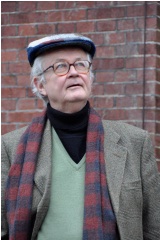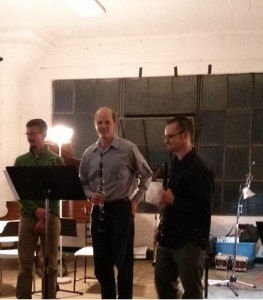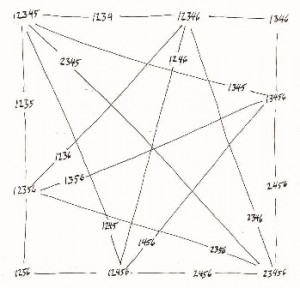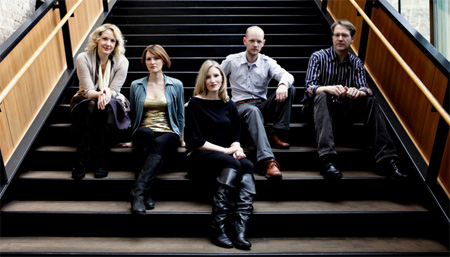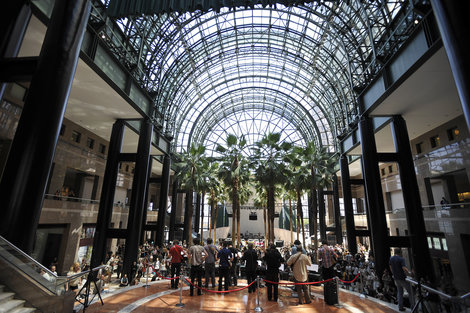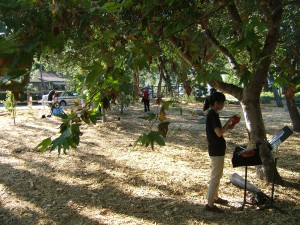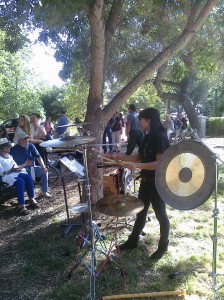[Ed. note: Welcome our newest contributor, conductor / percussionist / vocalist / composer Jordan Randall Smith. A Dallas native, Jordan is the Co-founder of the Dallas Festival of Modern Music and the festival’s sister ensemble, Ars Nova Dallas, serving as Conductor and Artistic Director. Jordan’s just moved on to Baltimore to pursue a Doctorate of Musical Arts in orchestral and operatic conducting at the Peabody Conservatory. ]
Last weekend, Opera Hispánica concluded their first festival and third season with Astor Piazzolla‘s María de Buenos Aires, his 1968 tango “operita,” or what might be called chamber opera by the wonkish. However, this Sunday, the chamber was filled not with nobility ancient or contemporary, but with beer and wine, and the people who like to consume them, at New York’s Le Poisson Rouge. (Although, some opera nobility, including one of Plácido Domingo’s sons, were spotted at the Sunday evening show.) In truth, the word “opera” is only useful in that it brings to mind how openly this drama defies the classical notion of what opera is supposed to be. Instead of conforming to tradition, it provokes a re-examination of convention. This sort of provocation proved to be the theme for the work and for the night.
With a tango band occupying fully 60 percent of a stage which is already rather limited in dimension, production design was a daunting task expertly fulfilled by Stage Director Beth Greenberg of City Opera fame. Greenberg managed to turn the cramped, uncooperatively spare stage to her advantage, projecting into the space a smokey, claustrophobic Buenos Aires alleyway positively dripping with sinful lust and criminality, where “Hustlers, pimps, and devils appear at every turn,” as Greenberg wrote in the program. And the claustrophobia was palpable. The audience was repeatedly intruded upon by El Duende (ghost poet), a spoken role played by Gerardo Gudiño. The tragic heroine María, performed by Solange Meridinian, also came to a portion of a table in the middle of the audience to penetrate both the 4th wall and the comfort zone of the audience with the surrealist poetry of librettist Horacio Ferrer. In an interview for Sequenza21, Greenberg admitted, “you spend a great deal of time with a work with symbolism as dense as this, you spend time looking for a door in. The poetry is so rich that it can actually at times seem impenetrable, but you look for a door in, and it always rewards you in the end.” The audience was rewarded with the fruit of these artists’ diligence in what came out as a heady mix of musical riches, rhythmic banality, and dramatic density that somehow reached in and grabbed each of us.
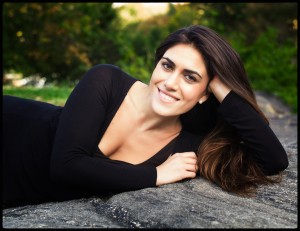
“Forgotten among women,” the text reads, upending the biblical Mary, an archetype this diminutive operita pokes, prods, and ultimately breaks. The text is not purely in spanish but often in a lower class Buenos Aires dialect called Lunfardo, spoken in “the Tango underground,” as Meridinian called it in correspondence with Sequenza21 for this review. The work is rife with religious imagery and references: from the Virgin Mary, to the baby Jesus, to the wicked, the latter which in Ferrer’s and Piazzolla’s world seem often to go through life unpunished. Meanwhile, wide-eyed orphan María pays for her innocence and naiveté with her virginity and her life, set to the unrelentingly sensual rhythm of the dance.
Solange Meridinian, who is herself from Argentina, had been waiting nearly ten years for the right opportunity to finally perform María, and happened to have not one but two chances crop up, the first having been with the Lexington Philharmonic this past February. Meridinian gave a startlingly resonant account of her character, difficult in a work which even embeds its own internal psychoanalysis into the latter scenes. It was doubtless a taxing work for the highly-capable mezzo-soprano, who consistently had to perform in the lowest parts of her already extensive vocal range. She handled each phrase and scene with care and culture, remaining mindful of the tango style. The other musicians and dancers performed excellently, although there was an unpolished instrumental solo in the beginning of the fugue from “Fuga y misterio.” As a whole, the musical ensemble served the drama admirably throughout the work’s sixteen numbers as a sort of commenting Greek Tango Chorus, even interjecting sensational bandoneónista JP Jofre as an ad hoc cast member during one episode.
At this point, the music and the name of Astor Piazzolla is widely-known among musicians and music-lovers. In recent decades, his music has become something of a crossover sensation in symphony halls, cabarets, and every venue in between. Unfortunately, the popularity of his tango-infused compositions has ironically caused them to often receive unfair dismissal in terms of emotional or musical depth. After a night with María in the hands of Opera Hispánica, the audience left with no such misapprehensions.
